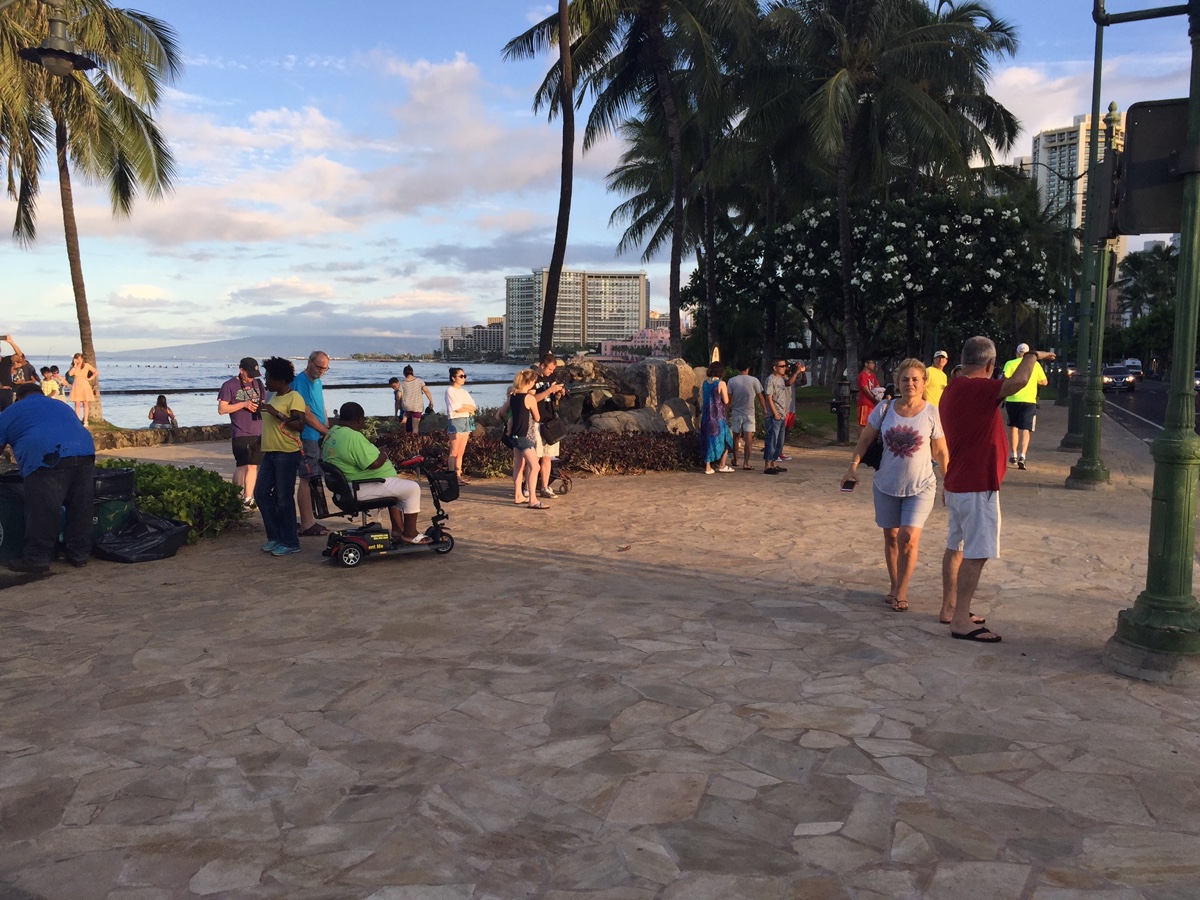Hawaii Says Aloha to the Solar Eclipse

HONOLULU — With the first rays of light to touch Hawaii early this morning, people here bid aloha to a partial solar eclipse.
On the south shore of the state's most populous island, Oahu, several hundred people spread out in small groups along the famous Waikiki Beach to take in the sight. Several dozen surfers paddled out and turned their boards eastward in the middle of the bay, watching the eclipse unfold from the water.
Although the island chain lies outside the path of today's total solar eclipse, people here excitedly greeted an already-partially-eclipsed sun at sunrise, which happened at 6:11 a.m. local time (12:11 p.m. EDT, 1600 GMT). The eclipse actually began while the sun was still just below the horizon.
- Here's How to Watch the Great American Solar Eclipse Live
- Total Solar Eclipse 2017: Everything You Need to Know
"For people in Hawaii and actually all around the Earth, a solar eclipse gives us some connection to the fascinating events happening on the sky," said Günther Hasinger, an astronomer and the director of the Institute for Astronomy at the University of Hawaii. "The sky is actually not boring and everlasting; it is full of exciting phenomena," and a solar eclipse brings many people a personal experience with celestial mechanics, he said.

The partial eclipse visible in Hawaii has less drama than a total eclipse visible across a narrow swath of the United States from Oregon to South Carolina, Hasinger said. From here, the sun "looks a little bit like Pac-Man," as though the moon has taken a bite out of the sun, he said. But people watching even a partial eclipse still need to avoid looking at the sun unless they are wearing eclipses glasses, he noted.
Seattle resident John Co was on the beach early, and was looking forward to the magic of seeing an eclipse, he said. "It's just phenomenal," he told Live Science. Co had originally planned to drive from Seattle down to Oregon, to see the full eclipse, but wound up traveling to Hawaii instead for a wedding. "A partial is still really cool," he said.
Fifteen-year-old Toronto resident Nina Lazaro and her mother, Xenia Lazaro, also got an early start to their day just to see the eclipse from the beach this morning. Nina Lazaro said she had been looking forward to seeing the eclipse ever since she started seeing news stories about it and that she had been interested to learn the science behind it. "I'm really excited to see it," she said.
Sign up for the Live Science daily newsletter now
Get the world’s most fascinating discoveries delivered straight to your inbox.
The eclipse is also important to scientists who study the sun, Hasinger told Live Science. For example, University of Hawaii astronomer Shadia Habbal will be gathering data from five stations on the U.S. mainland that are in the path of the eclipse. The researchers will be studying variations in the sun's corona, which is the outermost part of the sun's atmosphere; on a typical day, the brightness of the sun's disk overpowers this spiky outer atmosphere.
From the vantage point of Hawaii, the maximum extent of the eclipse — when the moon covered the largest portion of the sun — occurred at 6:35 a.m. local time (12:35 p.m. EDT, 1635 GMT), and the eclipse ended at 7:25 a.m. (1:25 p.m. EDT, 1725 GMT).
Jamie Castaneda, a first-time eclipse watcher who was visiting from Oregon, was out on the beach with his kids during the event. "They really liked seeing the eclipse," he said.
Seattle-area resident Debbie Siler was visiting Hawaii and came to the beach at sunrise. Seeing the eclipse in the early morning was really cool, she said. Her son had stayed home in Washington and had become fascinated by the science of the eclipse. She said she couldn't wait to talk to him to see what he thought of it.
"To personally see a total solar eclipse is an experience of a lifetime. It is breathtaking and gives you a sense of how powerful nature is," Hasinger said.
The islands last saw a total solar eclipse 26 years ago. The July 1991 eclipse was visible from the islands of Hawaii and Maui. The next solar eclipse visible from here will be a partial eclipse that occurs on April 8, 2024.
About 150 solar eclipses have been visible in Hawaii during the 1,500 years that humans have lived here, according to a 1991 paper published in The Hawaiian Journal of History. The next time Hawaii will be in the path of a total solar eclipse will be in 2106.
Original article on Live Science.










